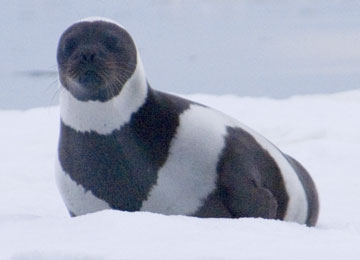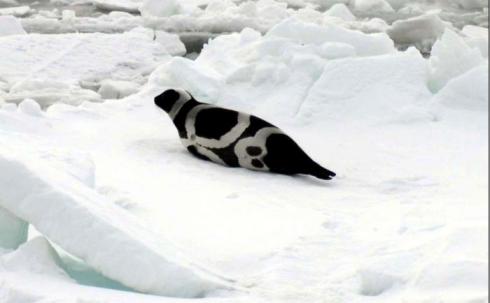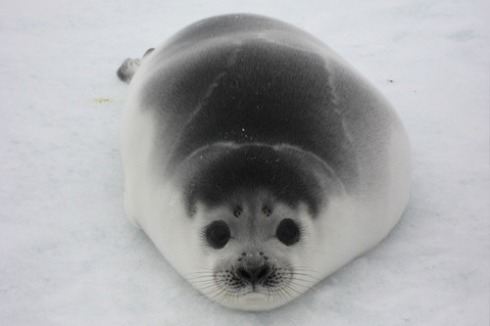Here is a beautiful marine mammal which is somewhat underappreciated. The ribbon seal (Histriophoca fasciata) is a gorgeous medium sized true seal (Phocidae) which lives in the Arctic edges of the North Pacific. Populations of the seal range from northern Alaska down the Aleutians and from the Kamchatka Peninsula down along the coast of Asia to the Koreas and the northern tip of Japan. The ribbon seal is the sole surviving member of its genus and it is notable for its lovely yet bizarre coat—the adult seals are black with undulating ribbons of white running around their entire bodies.
Ribbon seals dive deep into the pelagic depths to hunt their prey. The diving mammals live on pollacks, eelpouts, cod, and cephalopods which they hunt at depths of 200 meters. The seals themselves are preyed on by polar bears, orcas, and large sharks—including sleeper sharks—huge predators of the benthic depths.
The seals are approximately human size: both males and females grow to about 1.6 m (5.2 ft) long, and weigh 95 kg (210 pounds). In ideal circumstances they can live longer than 25 years. Ribbon seals reach sexual maturity somewhere between the ages of two and six (depending on gender, diet, and heredity). They give birth to adorable fluffy white/silver pups who nurse for only four weeks before being forcd to hunt on their own!
Ribbon seals were overhunted by humans for their fur, but they live in such remote regions that they have probably never been in real danger of extinction. Their real numbers of ribbon seal populations are somewhat unknown but are estimated to be around 250,000. I can’t find any information about why they have such remarkable coats, so I will go ahead and guess that it is because they are fashionable!






Leave a comment
Comments feed for this article